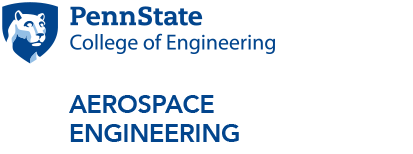
Adverse Environment Rotor Test Stand Facility
The Penn State Vertical Lift Research Center of Excellence designed, fabricated, and calibrated an Adverse Environment Rotor Test Stand (AERTS) where icing environments can be reproduced.
The mission of this unique facility is to provide means to test new anti-icing and de-icing concepts such as ultrasonic ice protection technologies. In addition, the AERTS facility is used for ice accretion analysis validation and ice adhesion strength measurements to different coatings.
Key Faculty: Jose Palacios
Rotor Icing Test Stand
The facility is formed by a 10-ft. diameter hover stand inside a climatic chamber where aircraft icing conditions can be reproduce. The icing clouds formed by super-cooled water droplets can be controlled in terms of liquid water concentration (or cloud density), water droplet diameter, and temperature.
The rotor can be spun at a maximum of 1200 RPM depending on the rotor configuration. Testing can be conducted at temperatures as cold as -20 degrees Celsius.
Icing Wind Tunnel
The icing wind tunnel is a unique facility that is able to reproduce partially melted ice crystals via convection cooling and heating of water droplets, just as it happens in the atmosphere. Partially melted crystals are the cause of recent engine icing phenomena. The facility can also reproduce airframe icing conditions by creating super-cooled water droplets.
The facility has two test sections: a 36" x 24" section with a maximum test speed of 78 Knots and an 18" x 18" section with a maximum test speed of 150 Knots. Testing can be conducted at temperatures as cold as –10 degrees Celsius.
Facilities and Labs
- Adverse Environment Rotor Test Stand
- Aeroacoustics Facilities
- Air Vehicle Intelligence and Autonomy Lab
- Control and Analysis of Stochastic Systems Lab
- High-performance Computing Cluster Facility
- Indoor Flight Research Lab
- Robot Ethics and Aerial Vehicles Lab
- Rotorcraft Flight Simulator Facilities
- Sailplane Lab
- Space Propulsion Lab
- Structures Labs
- Student Space Programs Lab
- Turbomachinery Aero-Heat Transfer Lab
- Water Channel/Water Tunnel
- Wind Tunnels
- Wind Turbine Field Test Facility



